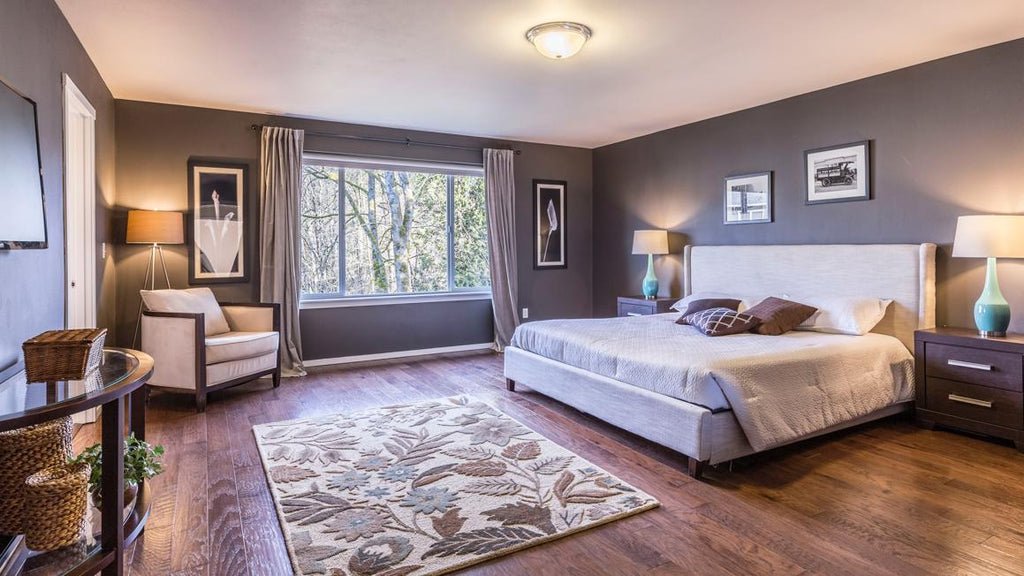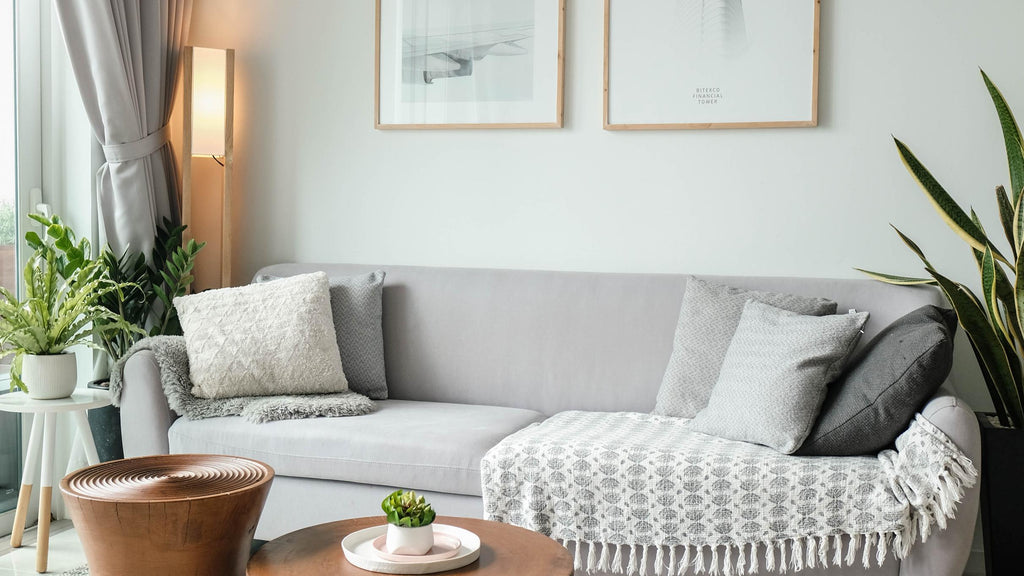Your floors face damage threats every day from construction, events, moving, and home projects. Scratches, dents, stains, and more can occur if you're not vigilant. While prevention is ideal, it's not always possible. However, you can minimize risks by using temporary floor protection in the right situations.
Temporary floor coverings create a barrier against damage when you need it most. Read on to learn the top occasions to use temporary floor protection for keeping your floors flawless.
During Construction and Renovations
Construction zones wreak havoc on flooring. Demolition, reconstruction, and tradespeople tracking back and forth puts floors at high risk of:
- Scratches and gouges from tools and materials.
- Dents and punctures from heavy equipment.
- Warping or buckling under heavy loads.
- Staining and paint splatters from spills.
Exposed subfloors and finished floors not involved in the renovation also suffer without protection. The solution? Install temporary floor protection before work begins.
Where to Use Protection
Cover all finished floors near the renovation zone with:
- Padding - Provides a protective cushion.
- Mats - Grip surfaces to stay in place.
- Poly sheets - Create a full moisture barrier.
In high-traffic zones, use:
- Plywood sheets - Prevent dents from heavy loads.
- Edge/corner guards - Protect vulnerable edges.
Material Properties to Seek Out
Look for floor protection with these key traits:
- Waterproof - Contains spills or leaks.
- Non-slip - Stays safely in place.
- Breathable - Allows ventilation.
- pH neutral - Won't stain or alter finishes.
Using the right temporary flooring materials throughout your renovation ensures your floors stay like new. Prevention protects your investment and avoids costly repairs later.
At Events and Exhibitions
Special events pose unique threats to your floors, including:
- Food/drink spills from catering or guests.
- Increased dirt and debris tracked inside.
- High foot traffic wearing down surfaces.
Without protection, your floors will show the impact after events conclude. But you can maintain flawless floors by using temporary coverings in key areas. You may want to know: Floor Temporary Protection for Parties: How to Protect Your Floors from Damage.
Where to Use Event Flooring
Install protection at:
- Entryways - Catch dirt from guest shoes.
- High traffic zones - Avoid wear and tear.
- Food service areas - Contain spills.
Use:
- Mats - Provide grip and soak up moisture.
- Carpet tiles - Add softness underfoot.
- Runners - Guide traffic flow.

Temporary flooring keeps events floors immaculate.
Material Considerations
Seeking out floor protection with these attributes enhances events:
- Waterproof - Contains spills quickly.
- Non-slip - Stays in place with active crowds.
- Reusable - Reduce event waste.
- Raised access (optional) - Allows wiring and breathability.
Proper temporary flooring gives your floors heavy-duty protection against the demands of events.
Throughout Home Improvement Projects
Home renovations involving plumbing, electrical, foundation, or any construction expose floors to harm from:
- Heavy tools or equipment dropping.
- Construction debris spreading.
- Moisture leaks.
- Dust and dirt accumulating.
Don't let your home project create unnecessary floor damage. Use temporary protection to keep floors safe.
Where to Apply Floor Coverings
Cover all finished floors near the project area with:
- Padding - Cushions against impacts.
- Poly sheets - Waterproof barrier.
- Plywood (high-traffic areas) - Prevents indentations.
Also use:
- Edge guards - Protect vulnerable corners.
Temporary flooring keeps home projects from damaging floors.
Helpful Floor Protection Properties
Seeking out materials with these traits serves home projects well:
- Thick - Absorbs impacts.
- Non-slip - Stays in place when walked on.
- Waterproof - Contains spills or leaks.
- Breathable - Allows air circulation.
Robust temporary floor coverings used throughout home projects give you peace of mind while keeping your floors flawless.
When Moving Furniture or Appliances
Moving anything heavy in your home risks:
- Scratches or gouges from sliding.
- Dents from impacts.
- Cracks under heavy weight.
Don't let moving damage your beautiful floors. Use surface protection to glide items safely across floors.
Where to Apply Protection
Use protection along the entire moving path, especially:
- Hardwood floors - Susceptible to scratches and dents.
- Tile floors - Cracking risk under appliances.
- High-traffic zones - Prevent wear from repeated steps.
Materials like:
- Felt pads - Cushion and prevent scratches.
- Wood boards - Spread weight evenly.
- Furniture sliders - Smooth movement.

Temporary flooring enables safe furniture movement during moves.
Helpful Material Traits
Seeking out protection with these attributes makes moving safer:
- Thick - Absorbs impacts well.
- Smooth surface - Allows sliding.
- Non-slip backing - Stays in place.
- Low-profile - Easy to walk over.
With the proper temporary flooring for moving, you can relocate anything without worrying about floor damage.
For Pet Accidents and Spills
Pets and messy accidents also threaten floors with:
- Stains from pet accidents.
- Discoloration from spills.
- Odors seeping into porous floors.
While inevitable, you can contain these threats and simplify cleanup using temporary protection.
Where to Use Protection
Apply protection in pet areas prone to accidents like:
- Near pet beds
- Beside food/water dishes
- Near doors where they wait
Also cover spots vulnerable to spills like:
- Kitchen entries and tables
- Bars and beverage stations
- Kids' rooms
Helpful Material Properties
Seeking out floor protection with these traits contains messes:
- Waterproof - Locks out stains and odors.
- Super absorbent - Soaks up liquids quickly.
- Odor resistant - Prevents smells from setting in.
- Machine washable - Cleans up easily after use.
The right temporary flooring helps you manage daily mess mishaps without permanently damaging your floors.
For an Added Layer of Safety
Finally, temporary floor protection adds a safer layer of cushioning against:
- Noise - Helpful for upstairs neighbors.
- Temperature - Insulates floors.
- Impact - Reduces injury risk if someone falls.
Protection applied throughout the home protects both your floors and family.
Where to Add Safety Layers
Apply floor protection:
- Underneath area rugs - Prevent sliding.
- In kids' rooms - Cushions falls and noise.
- At top/bottom of stairs - Increase grip.
Helpful Properties
Seek safety-enhancing floor protection with these traits:
- Cushioning - Absorbs shock upon impact.
- Non-slip - Prevents slips and falls.
- Sound absorbing - Reduces noise transfer.
- Insulating - Regulates temperature.
Added temporary flooring boosts safety across your home's floors.
Keep Your Floors Flawless With Spriteshield Floor Protection
Spriteshield offers premium temporary floor protection designed specifically for demanding situations. Our heavy-duty floor coverings ↗ are:
- Thicker - More cushion and puncture resistance.
- Denser - Withstands heavy traffic and loads.
- Adhesive-backed - Stays firmly in place.
- Beveled edges - Smooth transitions across floor gaps.
We also provide:
- Custom sizing - For a perfect fit.
- Volume discounts - For large projects.
- Fast shipping - Delivered in 1-3 days.

Our temporary floor protection ↗ keeps your floors immaculate through any situation. We offer premium materials specifically designed for high-traffic and demanding conditions.
Leave a comment
All comments are moderated before being published.
This site is protected by hCaptcha and the hCaptcha Privacy Policy and Terms of Service apply.